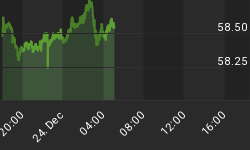My June 6 communication showed that the 8 deep and very deep Monthly DJIA Coppock Curve buy signals occurring after 12/1/61 comprise 4 distinct pairs with respect to time path patterns generated by plotting the smoothed CI-NCI Ratio against the inverted and smoothed NYSE TRIN. One of those pairs consists of the signals of 4/28/78 and 5/30/03.

Data permit moving the initial date of investigation from 12/1/61 to 12/27/40. That allows the time paths of 2 additional deep Coppock Curve buy signals (9/30/42 and 8/29/47) to be highlighted on the chart, from the date the smoothed CI-NCI last dipped to 0.9500 to the date of the signal. The time path of the 8/29/47 signal fits the pattern of 1/31/63 and 9/30/82.

The time path of the 9/30/42 signal, on the other hand, fits the pattern of 4/28/67 and 10/31/88.

Thus, even after the addition of 21 early years to the investigation, the 4/28/78 and 5/30/03 signals remain uniquely akin with respect to pattern.
The following chart shows that the 9/30/42 signal was a big winner, but that the 8/29/47 signal was about 2 years early.

Most later signals were big winners. However, 4/28/78 was not. The outcome of the 5/30/03 signal remains to be seen.
















